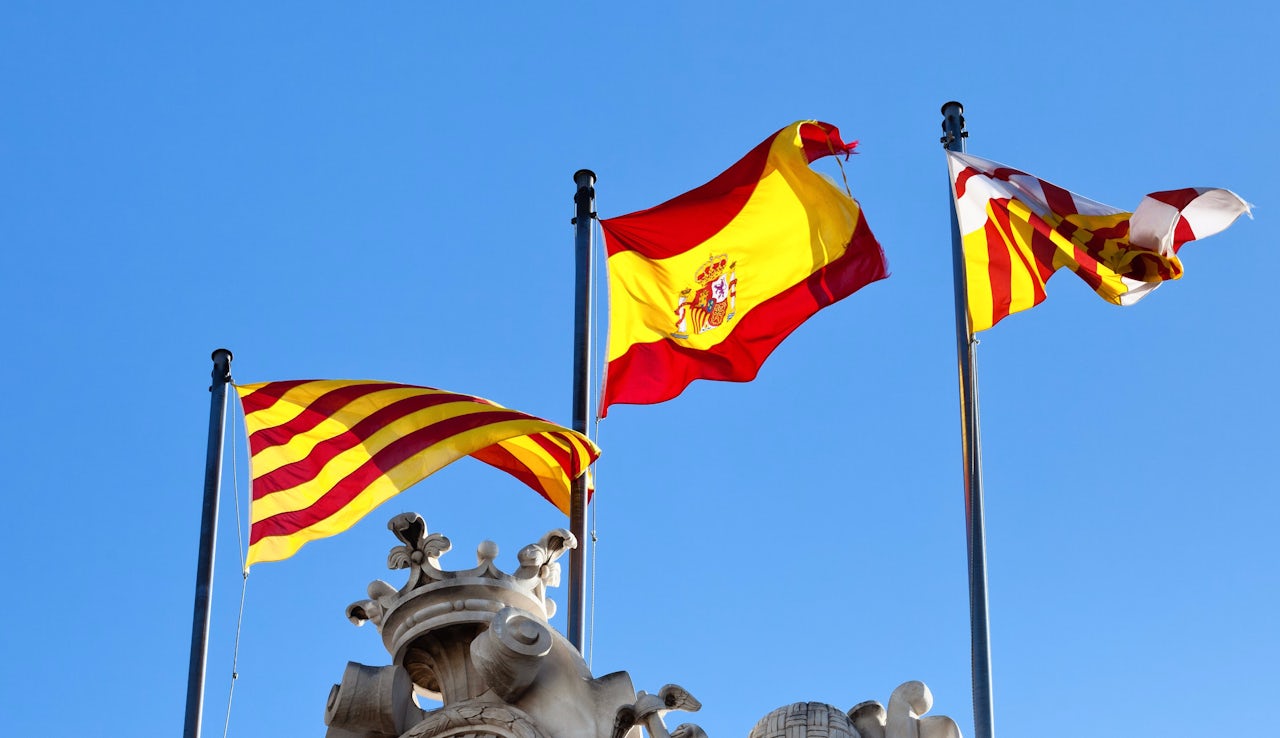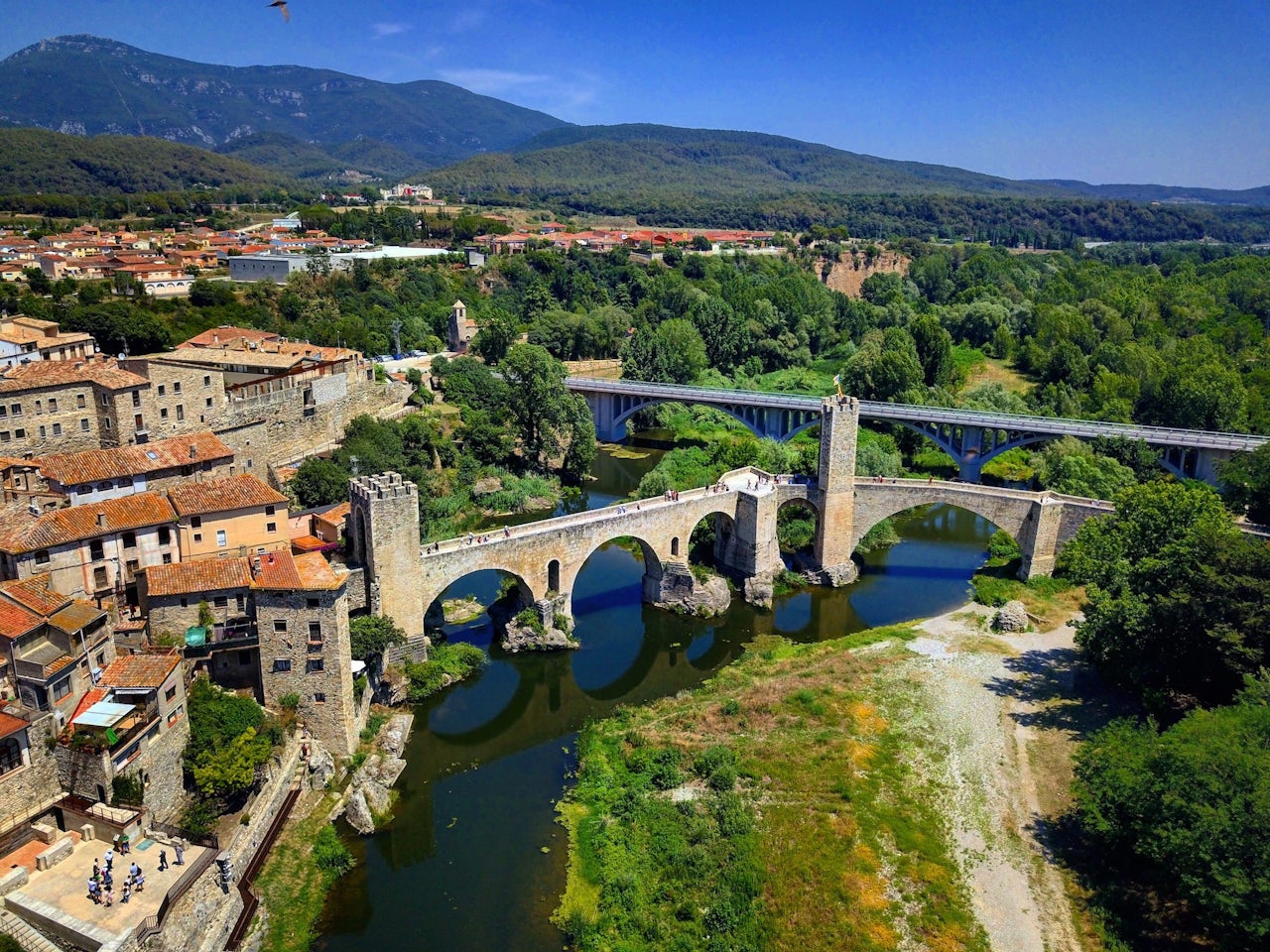A few years ago, I had this clever idea involving the .cat top-level domain.
Top-level domains, or TLDs, sit at the top of the domain hierarchy. In 1985, there were just seven TLDs: .com, .org, .net, .edu, .gov, .arpa, and .mil. Today, there are more than 1,000 TLDs running the gamut from .uk to .gucci. One of them is .cat.
See, I was looking to get married, my fiancée’s (now wife’s) name is Cat, and we wanted a fun domain name.
You can see where this is going. I went to go register ernie.cat, but found the process much more complicated than I was expecting. The .cat TLD — top-level domain, that is, like .com, .gov, .ninja, and so on — has a notable reason for existence: In 2005, with the support of the Spanish government and the approval of Internet Corporation for Assigned Names (ICANN), it became the first-ever domain name dedicated to a specific language, Catalan. (A number of other nearby regions with their own local languages, including Spain’s Basque Country and France’s Brittany province, later followed suit.)
It was a big win for Catalonia, an autonomous community of Spain that includes Barcelona. And this top-level domain, in its own modest way, reflects a particular pain point for the region — identity.
Identity is the very reason why this TLD has found itself in the news in recent days: Basically, Catalonia’s regional government, which is led by the pro-separatist Junts pel Sí coalition, is holding a referendum on breaking off from Spain, something that the Spanish government considers illegal but between 40 and 50 percent of the region’s population appears to support, according to local polls. In a widely-criticized move, Spanish officials raided the offices of Fundació PuntCat (DotCat Foundation), which manages registrations for .cat, arrested its head of IT for sedition, and removed pro-independence domains from the TLD.
This move evokes some painful, and pretty ugly, history. During the decades-long dictatorship of Francisco Franco, Catalan identity was forcibly hidden away from the broader world, as Spain attempted to portray itself as culturally homogeneous after the Spanish Civil War ended in 1939.
The 2005 approval of the .cat domain was largely ignored because it happened at the same time as the battle over .xxx
“The immediate consequence was that Catalonia lost many of the material resources for the production and reproduction of its culture,” noted Irene Boada, a lecturer in both Spanish and Catalan at Queen's University Belfast, wrote in The Conversation in 2015.
Boada made the case that the language and culture was stronger than the ban, which helped ensure its revival after Franco’s death in 1975. “Most Catalan people went on using their language at home and the language has survived against the odds,” she added.
In the years since, Catalonia’s political climate has become increasingly fraught — Spain gave the region the right to self-government as part of a 1979 law, but independence movements, such as that supported by the cultural-advocacy agency Omnium Cultural, have gained interest in the past decade, a period in which Catalonia’s economic strength has increased but efforts to grant the region more autonomy were blocked by Spain’s Constitutional Court.
This year, Catalan officials successfully revived the referendum movement, but Spain’s high court suspended the vote nearly three weeks ago, backing the federal government’s stance that a sovereignty vote can only be decided at the national level. The region decided to have a vote anyway.
It’s in this context that the work of PuntCat, led by Amadeu Abril i Abril, a former member of ICANN’s board of directors, a lawyer, and a native Catalan, is particularly enlightening.
Part of the reason .cat was the name used was because of a quirk of the domain system. Really, PuntCat, a Catalonia-based nonprofit launched to support the TLD, wanted a two-letter domain, to reflect Catalonia’s nature as a stateless nation. Abril suggested .ct. But ICANN only allowed two-letter codes for actual countries, as the group bases country TLDs on the two-letter country codes set by the International Organization for Standardization (ISO) in 1974. So .cat was its next best choice.
You can hear our interview with Amadeu Abril i Abril on our daily podcast, The Outline World Dispatch. Subscribe on Apple Podcasts, Spotify, or wherever you listen.
PuntCat won political support for its efforts from politicians like José Montilla Aguilera, a Catalan-speaking politician who served as Spain’s Minister of Industry, Tourism and Trade at the time. Abril background certainly helped PuntCat make its case to ICANN.
And yes, the Catalan people knew what they were doing when they chose .cat. From PuntCat’s 2004 application to ICANN:
The final question would [certainly] be: .cat? Meow!! Yes ;-) But then .net means “clean” in Catalan, and .nu, “naked.” And this can be expanded to exhaustion. Some names are nicer in different parts of the world. That’s a fact, not a bug.
But while the campaign ultimately won support in ICANN circles, it dealt with some snark along the way. “Outside the ICANN Board and staff, but influential in ICANN decision–making circles, were individuals of high technical expertise in the Internet but of remarkable cultural myopia,” Peter Gerrand wrote in a 2006 piece for the academic journal First Monday.
In the end, though, .cat earned its place on the internet fair and square. Strangely enough, the September 2005 approval of the .cat domain was largely ignored because it came about in the midst of a battle involving another well-known internet culture standby, pornography. At the time .cat was approved, ICANN officials were discussing what to do about .xxx, an attempt to create a red-light district for the internet that was led by a nonprofit that acts as a liaison for the adult film industry.
The George W. Bush administration, among others, fought ICANN’s implementation of the .xxx TLD, and ICANN eventually shelved the idea — only to revive it a few years later, with the first domains going live in 2011. By comparison, the showdown over .cat looked easy. If it was even mentioned in the English-speaking world, it was buried in stories about the .xxx TLD.
In many ways, .cat redefined digital culture more than .xxx. PuntCat put in cultural requirements for applicants. If you want a .cat domain, you have to have a legitimate cultural reason for being there. And once you buy a domain, you have to offer up significant amounts of Catalan content on your site — not just English or Spanish. That meant my attempt to win over ernie.cat was likely a lost cause.
(Other folks have had better luck. NYTimes.cat, which recreated the newspaper site but replaced all the photos with cat pictures, briefly appearing in 2015 before it was shut down by a copyright claim from the Times. The popular game/meme Nyan.cat has stayed online because it added a language selector that includes Catalan.)
It also means that when you go to a site on the .cat TLD, it actually reflects the local culture, something that one can’t say for many countries with attractive two-letter TLDs, such as Tuvalu (.tv), the Federated States of Micronesia (.fm), or even Colombia (.co).
“Some names are nicer in different parts of the world. That’s a fact, not a bug.”
Startups that have used domain hacks, or URLs that use top-level domains to sound like full words, in the past have been burned by geopolitical shifts. For example, Art.sy moved its domain name because of the long-running Syrian unrest, and .ly domain hacks, once a mark of startup culture, became difficult to acquire after the Libyan civil war.)
By taking a stand against domain hacks, .cat has actually succeeded at fulfilling its broader mission of giving Catalan identity a digital home. And that spirit has helped advocates for Catalan culture support broader political goals. There are more than 110,000 sites on the .cat top-level domain, some ranking among the 100,000 most popular sites globally. These sites host range from local news to Catalan sports to video games to teen culture.
That doesn’t mean that Catalan-speaking people aren’t unaware of the TLD’s global status: Fat.cat features food from Barcelona, for example. But it also means that if a theater actor who mostly performs in Catalan, like Toni Albà, wants to have a domain name that reflects his regional identity, he can.
The .cat domain, one of the first to offer internationalized characters like accent marks in the domain name, has been a trailblazer for the non-English world — especially for domains like .quebec, which follows a similar approach for Francophone Canada.
If Catalonia had not taken steps to protect .cat from cultural appropriation, this would be a far different tale. Their bold stance helped others to follow suit, especially as the DNS system, which manages names for internet sites, expanded beyond traditional Latin characters.
Yes, cats have a lot of currency on the internet. But PuntCat was working to protect something more fundamental — the rights of a linguistic culture, one that is spoken by more than 10 million people of people, to have a place in the world.
If Catalonia were to gain independence, the region would be finally eligible for a two-letter top-level domain such as .ct. That’s because country level domains are assigned by the Internet Assigned Numbers Authority, the ICANN-operated gatekeeper of domain protocols. It bases its decisions on ISO 3166 standards, which follow the United Nations’ lead when it adds new member states. Here’s how ISO handled the creation of the last new country, South Sudan, as well as how it handled the addition of Palestine in 1999.
The adoption of .ct or another two-letter domain might signal the end of .cat’s dedication to Catalan, but maybe not, since the language is also spoken in France, Italy, and Andorra. And as annoying as it has been for Catalan advocates to deal with comments about how the domain would make more sense if it were dedicated to felines, the double meaning of the word has been a boon for public awareness. Japanese, Canadian, and American pet owners attempting to register websites for their animals found out about the language, while companies discovered there was a distinct market for Catalan speakers in the same way, Abril told The Outline. All this helps the language from becoming obsolete.
“The language has survived hundreds of years of persecution,” he said. “How do you guarantee survival? In the nineteenth century it was about having literature in the language. In the twentieth century it was about having access to schools.”
“In the twenty-first century, it’s the internet.”

